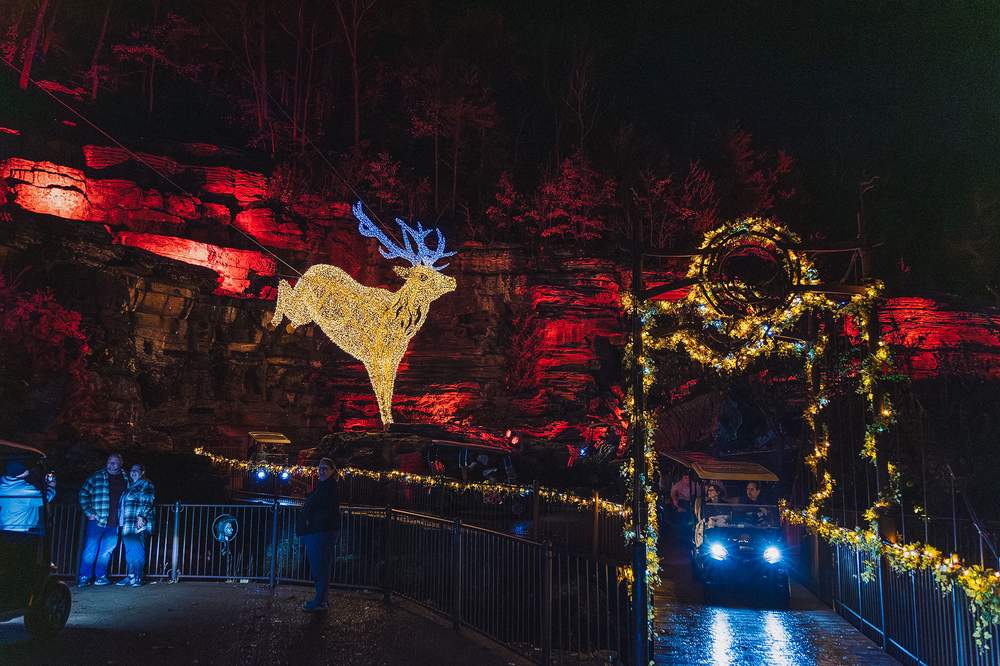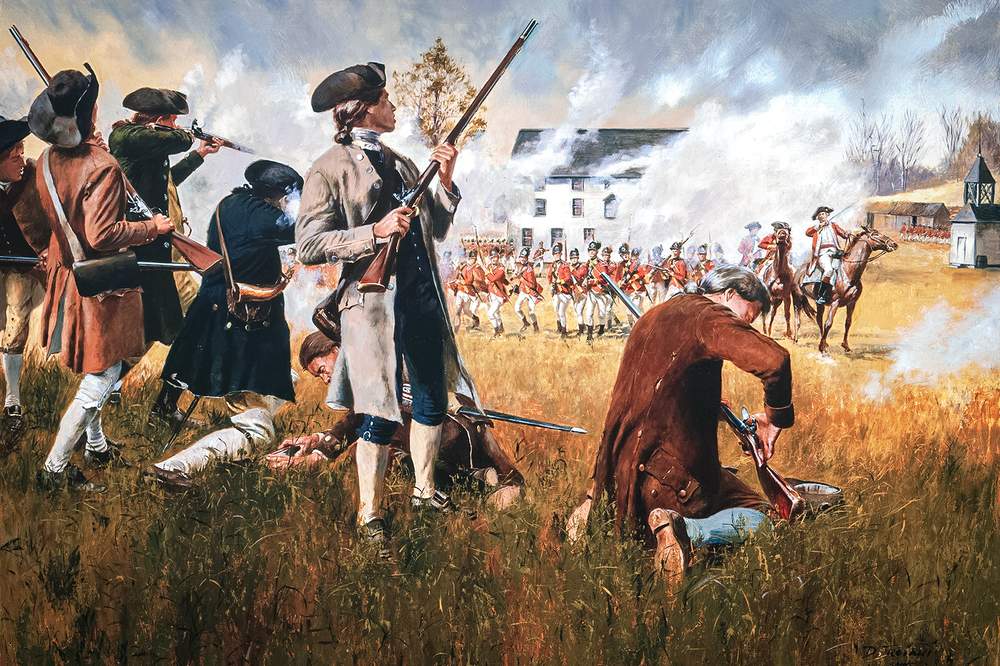Aliceson Bales is a strong believer in knowing where her food comes from, and in her house the evening supper originates on their Tennessee farm or her husband’s shotgun.
When the family isn’t enjoying farm-raised beef, chicken or pork, wild game fills the menu. Bales and her husband, Barry – who is the longtime bass player for Alison Krauss and Union Station – have established a pretty good system for putting wild duck, turkey and even sandhill crane on the dinner plate.
When he’s not touring, Barry spends his time busting ducks in the swamp or calling gobblers in the springtime woods. He shoots it and cleans it, and then Aliceson takes it from there.

“If the sun is going to rise, Barry’s going to hunt. If he brings home ducks, turkeys or whatever, the feathers are off, it’s clean and ready for the kitchen,” she says.
Aliceson didn’t grow up in a strong hunting family. Cooking wild game was relatively new when she met Barry and got married, as was the concept of raising what they eat on the farm.
But she quickly grasped the farm-to-table and field-to-table approaches, and in 2021 wrote a cookbook filled with the wild game recipes that originate with Barry’s hunting trips. Some of the recipes might sound a bit fancy, such as wild turkey roulade or grilled sandhill crane with risotto, but they’re all easy to make.
And that was Aliceson’s intention.

“I didn’t want to write a cookbook that would just sit on the shelf. I wanted it to be user friendly,” she says. “That means cooking with ingredients that you don’t have to order from somewhere far away.”
Aliceson put together the Bales Farms Cookbook during COVID when the world stopped. Barry wasn’t touring at the time, and his music studio at home sat quiet. Aliceson used the space to write down some recipes and descriptions, but still needed some convincing to get it published.
For that, she turned to a family friend and country music legend Dolly Parton.
After all, especially in Tennessee, if anyone’s opinion matters it’s Dolly’s.

“Dolly said she wanted to take a look at it, so we printed it out and gave her the rough draft in a three-ring binder,” Aliceson says. “She sent me a letter telling me to go for it, and you can’t say no to Dolly so we put it out there.
In fact, Parton liked the cookbook so much that she wrote the introduction, giving it a “big gold star.”
The success of the cookbook – especially when it comes to the Bales’ approach of cooking wild game – is centered on the mindset of using every edible part of the carcass. There’s no waste, Aliceson says, echoing one of the hallmarks of hunting ethics.
The approach has resulted in some tasty recipes that generate a main dish plus plenty for the freezer that will be reincarnated into a future meal.
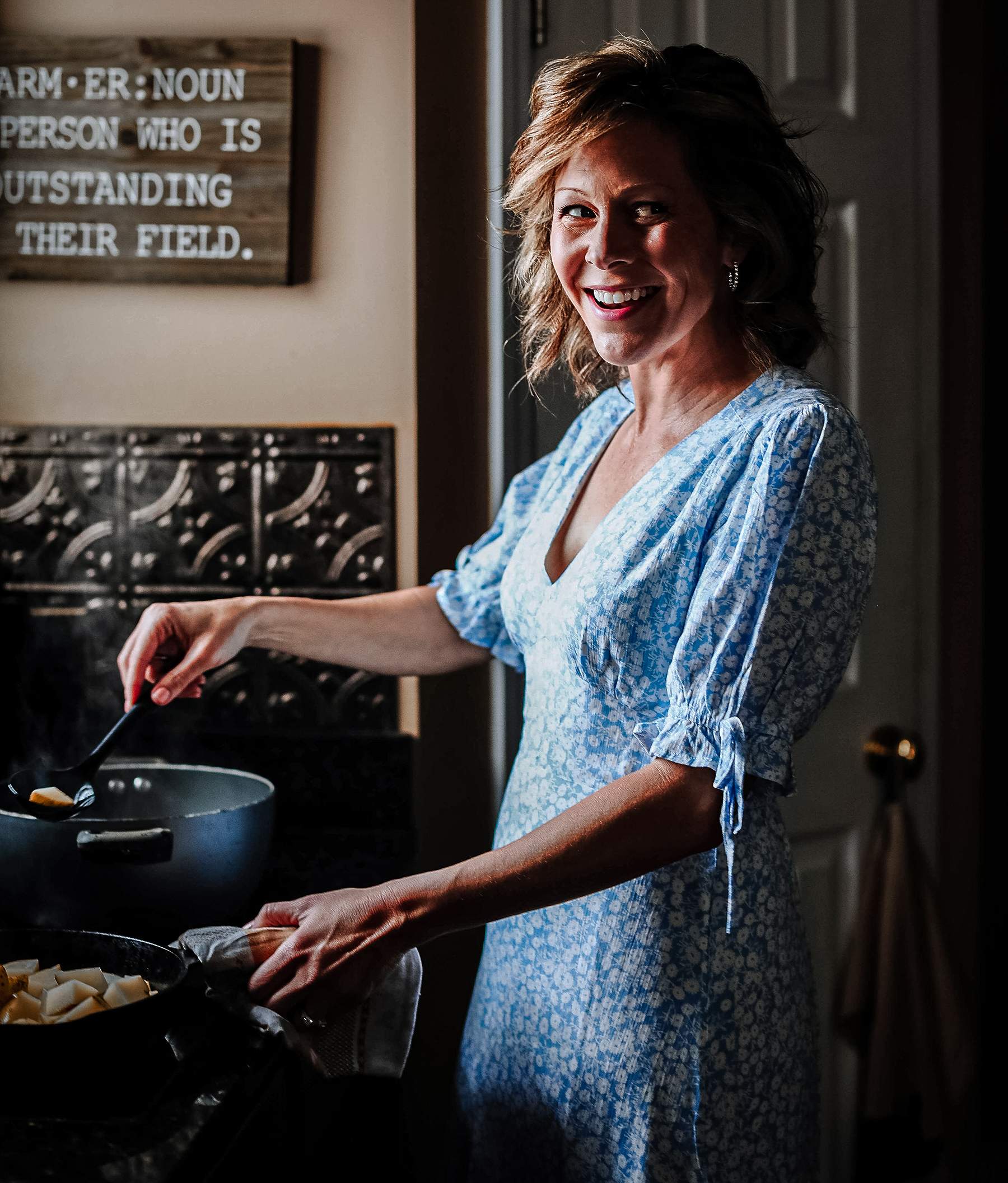
With Aliceson’s duck gumbo, for example, Barry smokes the entire bird and removes the meat. Once the gumbo is finished. The remaining carcass is cooked down to create a tasty broth that is frozen to be used in future meals.
One of Aliceson’s favorite wild game dishes, however, is one that’s hard to come by.
At the Bales’ dinner table, sandhill crane is a delicacy. But being able to hunt the large birds can be tough. Tennessee uses a computer drawing to issue 1,250 tags each season, and Barry has only been drawn twice in 30 years.
But when it happens and Barry connects, it’s hard to beat the sandhill crane suppers that are in store.
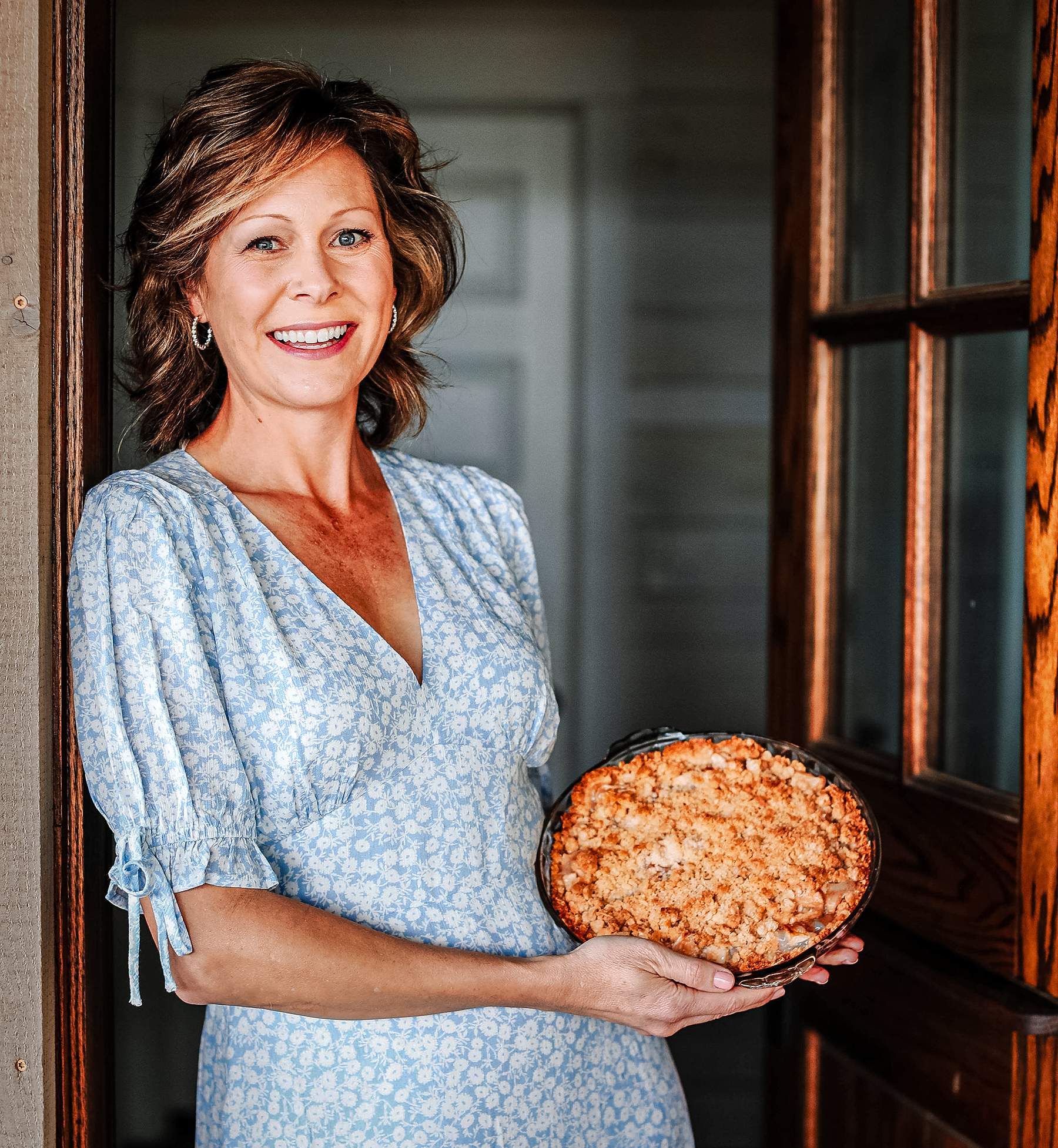
“When you tell somebody you’re going to have sandhill crane for supper, you get some really weird looks,” Aliceson says. “But it’s called the ‘ribeye of the sky’ for a reason. If you saw it on a plate, you would think you’re eating a steak.”
Because sandhill crane is a rare dinner option, Aliceson makes each meal an experience, topping the meat with risotto and some homemade bread. The end result is a homestyle dish with a bit of elegance to show of the uniqueness of having crane for dinner.
Yet not every wild game dish needs the flair to make it extra special. In fact, sometimes it’s best to keep it simple when having dinner guests that shun at the thought of eating something wild.
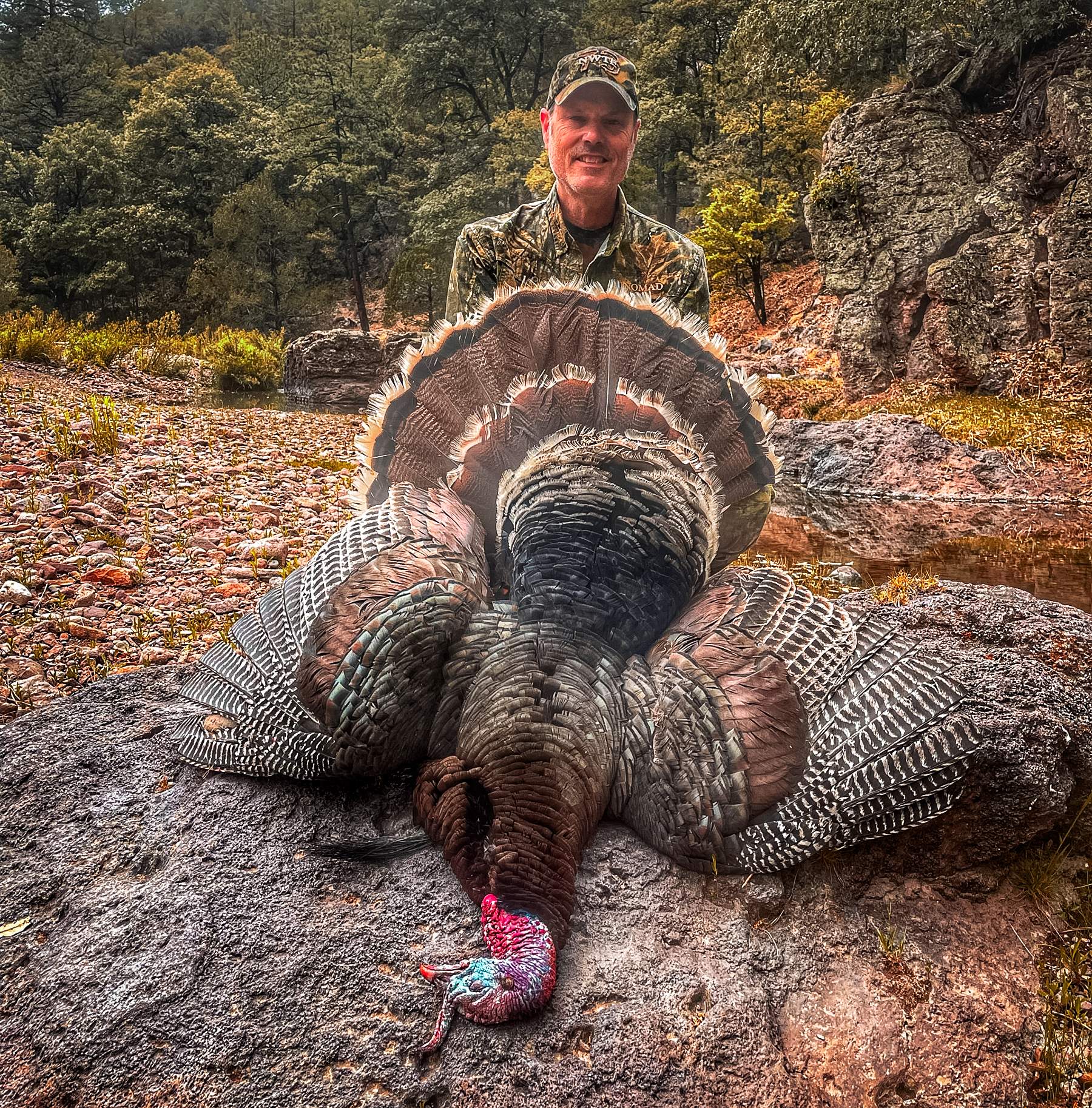
That’s something Aliceson encounters when her nieces and nephews come to the farm to visit. They don’t like wild game, or so they think, she says.
When it’s time to make dinner for the kids, Aliceson often uses wild turkey cut into strips and fired with batter.
“They eat them like crazy thinking it’s the best chicken tenders they’ve ever had,” she laughs. “It’s actually a fantastic way to eat wild turkey.”
A side benefit of cooking wild game is it’s expanded Aliceson’s culinary skills. The meat is lean and not greasy, yet when done correctly the flavor of wild game is unmatched. Most everything is cooked to medium or, in the case of duck and sandhill crane, medium rare, and that’s after a couple days soaking in an ice water bath to remove the blood.
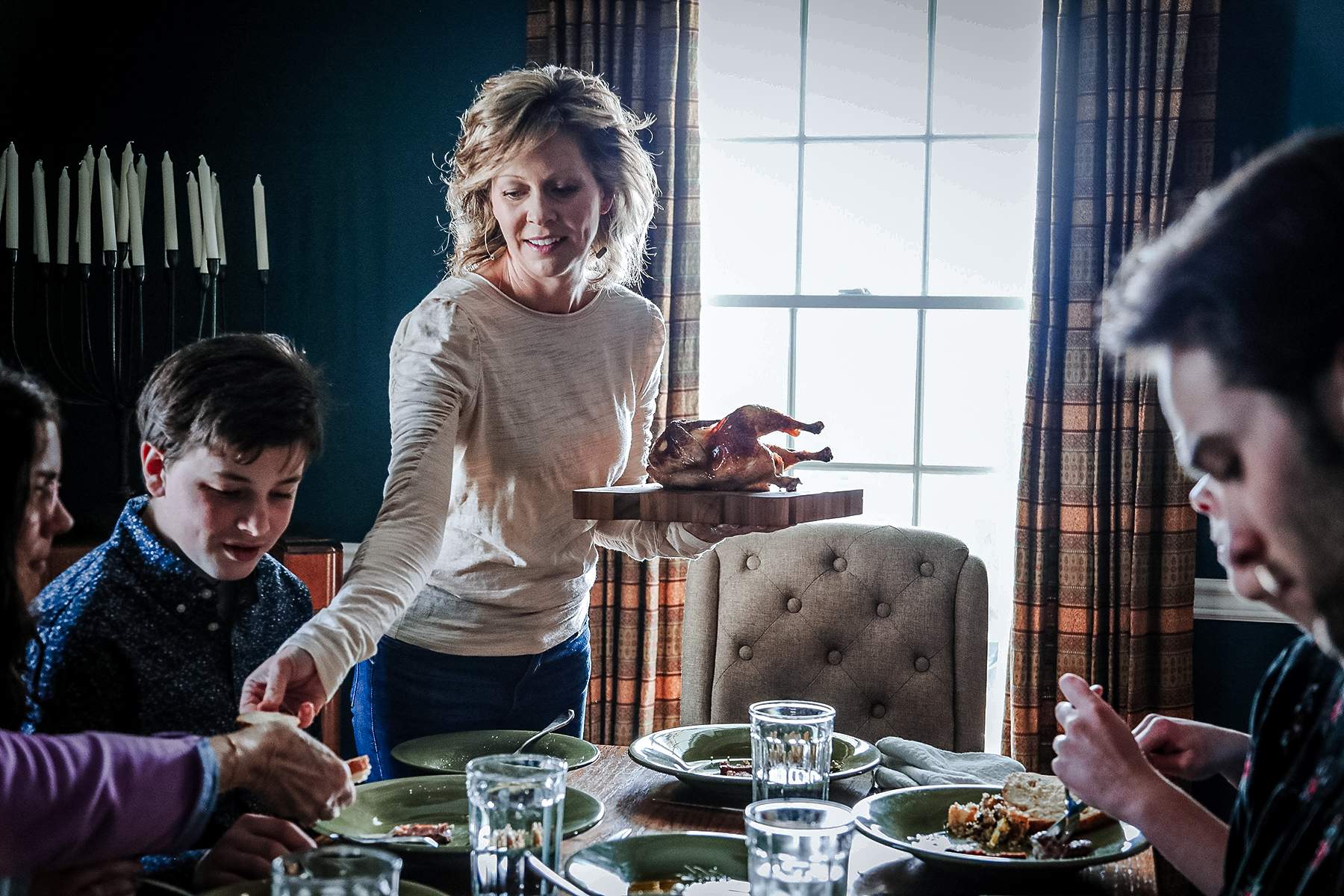
“Barry really does a good job of making it ready for the kitchen, and I like the feeling of seeing the process come full circle when I cook it and utilize everything we can from everything he hunts,” Aliceson says.
But the biggest attribute of wild game cooking – and a reason that compelled to write a cookbook – is when Barry brings home supper from the woods, Aliceson’s cooking brings the family to the table.
“We live in a society that is so fast-paced and kids are eating fast food in the backseat of the car. For us, wild game is special and it gets us to the dinner table. That’s how you keep a family strong,” she says.
3 Down Home Wild Game Recipes from Aliceson Bales’ Kitchen
Wild Turkey Roulade
(serves 6-8)
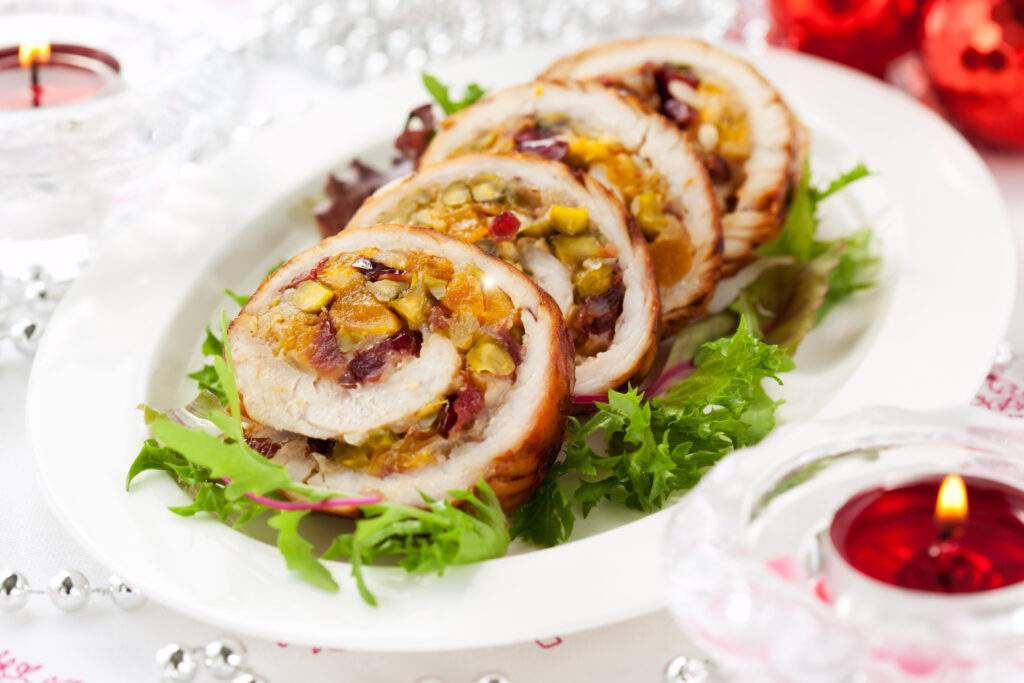
Ingredients
- Turkey breast prepped to cook, butterflied and pounded to 1/4 inch (typically 8-12 pound breast)
- 4-5 slices Prosciutto
- 1/2 cup mushrooms
- 4 medium artichoke hearts, drained
- 3 garlic cloves
- 2 sun-dried tomatoes, drained and patted dry
- 1/2 cup grated Parmesan cheese
- 1 teaspoon salt
- 1 teaspoon dried parsley
- 1/2 teaspoon pepper
- 1/2 teaspoon smoked paprika
- 1 tablespoon olive oil
Preparation Instructions
Preheat oven to 400 degrees. Prepare the turkey breast, butterfly and pound as above. You need a thin breast that measures approximately 10x12 inches.
Lay slices of Prosciutto on top of the turkey breast leaving a one-inch border along the edges.
Place the veggies, cheese and seasonings in a food processor and combine until blended.
Spread the mixture on top of the Prosciutto.
Starting with the longer side, roll the turkey breast to form a roulade and truss with food-grade twine.
Heat a large enamel-coated cast iron skillet with olive oil to medium heat, then sear the turkey roulade on each side until golden brown, approximately 2 minutes per side.
Transfer to oven and bake in the skillet for approximately 30-40 minutes or until turkey roulade registers 160 degrees.
Remove from oven and allow to rest, covered, for 10 minutes. Slice and serve.
Aliceson’s Noodle Bowls with Duck Breast
(serves 4)
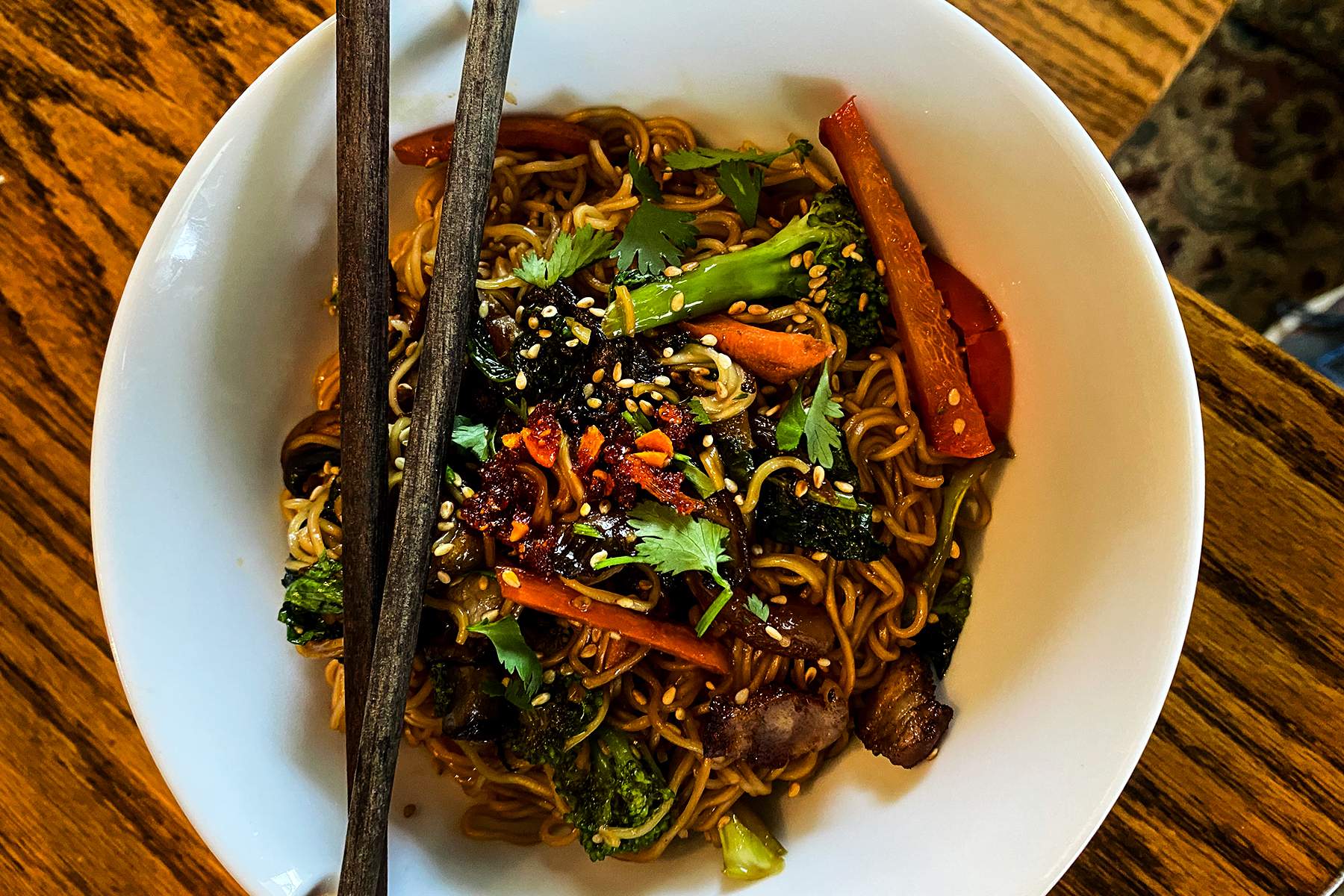
Ingredients
- 1 tablespoon sesame oil
- 3 duck breasts prepped and sliced
- 1/2 onion, sliced
- 1 carrot, sliced
- 1/2 red bell pepper sliced
- 1 cup of sliced cabbage
- 1 cup of broccolini, cut into bite-sized pieces
- 3 mushrooms sliced
- 1/2 cup spinach leaves
- 1 garlic clove sliced paper thin
- Ramen noodles (two bricks), cooked and set aside
- Garnishes: crunchy garlic, fresh cilantro leaves and toasted sesame seeds
The Sauce
- 1/2 cup reduced-sodium soy sauce
- 1/4 cup packed brown sugar
- 1/8 cup sesame oil
- Pinch of dried ginger
- Sprinkle of tasted sesame seeds
- Chili-garlic paste to taste
- Fresh cilantro leaves
Preparation Instructions
In a Mason Jar add the ingredients for the sauce.
Shake thoroughly to mix and set aside. In a large pot, bring water to boil and cook noodles according to the directions. Set aside.
Heat a wok with sesame oil until smoking hot, then add the sliced duck breast.
Cook for 1-2 minutes and remove with a slotted wooden spoon once no longer pink.
Add all veggies (including garlic) to the wok and sauté for approximately 2-3 minutes. The veggies should still have a “bite” to them.
Add the duck breasts, cooked noodles and sauce to the wok and stir to combine.
For serving, ladle the noodles, veggies and duck into 4 bowls and garnish with fresh cilantro, toasted sesame seeds and crunchy garlic (if you like).
Grilled Sandhill Crane with Risotto
(serves 4-6)
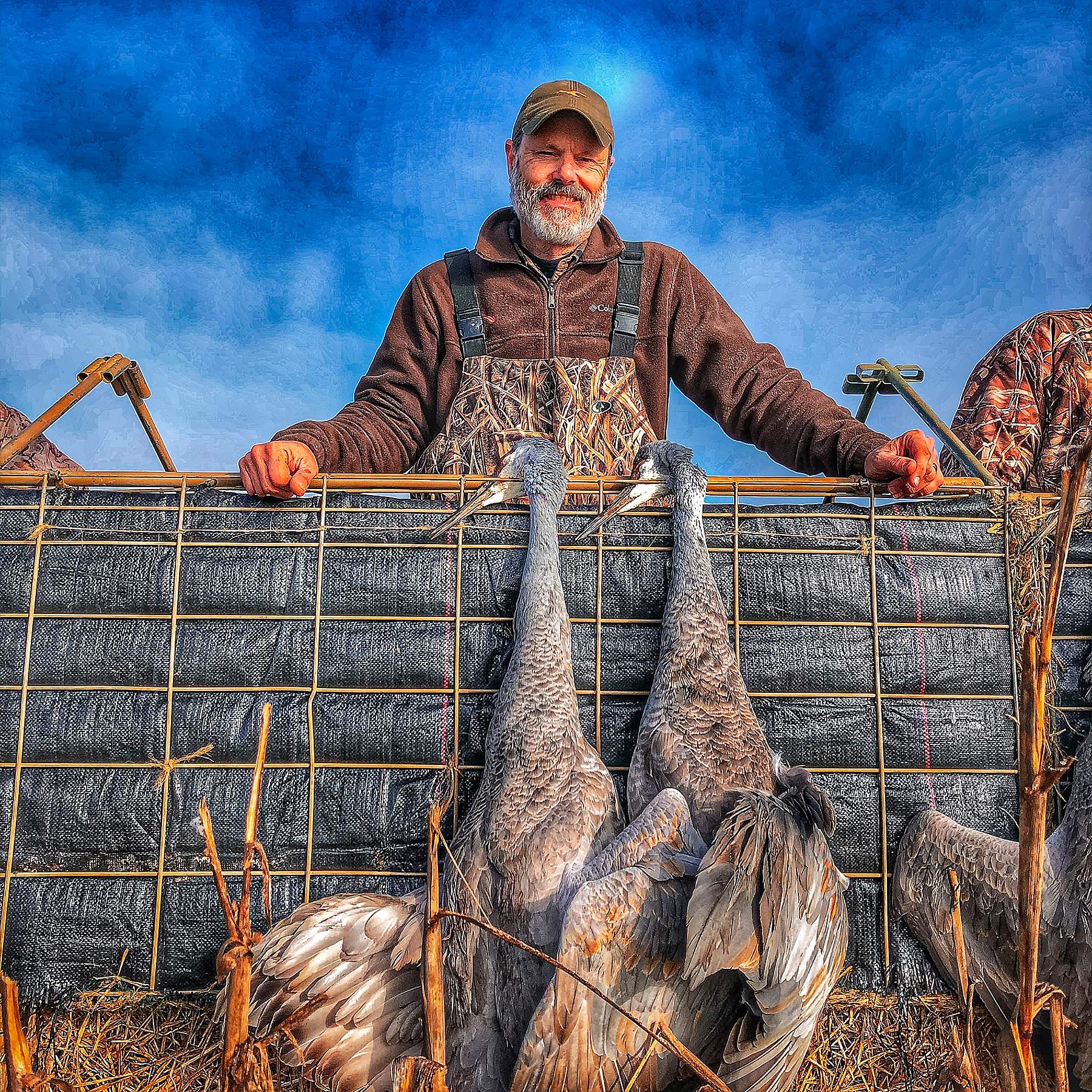
Ingredients
For Sandhill Crane
- Sand Hill Crane breast meat, prepared to grill
- Olive Oil
- Salt and Pepper to taste
- 1 teaspoon Worcestershire sauce (optional)
For Risotto
- 2 tablespoons olive oil, divided
- 1 cup diced sweet onion
- 1.5 cups Arborio rice
- 5 cups homemade chicken broth (can use store bought if needed), heated to a simmer and kept warm throughout the process
- 1/2 teaspoon saffron threads
- 1/2 cup white wine (optional, if omitting add 0.5 cup broth)
- 1 cup frozen peas
- 1/2-1 cup sliced fresh mushrooms
- 1/2 cup Parmesan cheese, grated
- 1/4-1/2 cup half and half
- 4 tablespoons unsalted butter, diced
- salt and pepper to taste
Preparation Instructions
Prepare crane breast meat and drizzle with Worcestershire sauce if using.
Bring grill to 400 degrees.
As grill is heating, rub the breasts with olive oil and season with salt and pepper.
Grill the breasts at 400 degrees for approximately 4 minutes per side, or until medium rare. Time for this stage will depend on the size of the crane breast.
Once medium rare, remove from heat and place on a plate covered with foil to rest for 10 minutes.
Once rested, thinly slice the breast.

Risotto Instructions
Preheat oven to 400 degrees.
In a large, enamel coated cast iron sauce pan (Aliceson uses a 12-inch Lodge Enamel Cast Iron Braiser) heat 1 tablespoon olive oil over medium heat.
Add the diced onions and cook until translucent.
Remove from heat and transfer to bowl.
In the same pan add the remaining olive oil and Arborio rice and stir to coat rice with oil. Sauté for 1-2 minutes to warm rice.
Add 4 cups of the broth and saffron threads, stir and bring to a simmer.
Cover and transfer to the oven to bake at 400 degrees for 20 minutes or until the liquid is absorbed.
Remove from the oven once the liquid is absorbed and place on stovetop to finish the cooking process. Bring the stove eye up to low to medium heat.
Stir in the remaining cup of broth plus the wine (if using and if not add the additional broth), butter, whipping cream and Parmesan cheese.
Add the reserved diced onions, frozen peas and fresh mushrooms.
Stir continuously until the risotto has absorbed the liquid and the dish is creamy. Season with salt and pepper as needed.
This dish will take quite a bit of salt, probably 1-2 teaspoons, but add gently and intentionally, tasting as you go.
To serve, layer the risotto in a meal bowl, top with sliced crane breast and garnish with additional grated Parmesan cheese.
This dish pairs beautifully with homemade bread for a delicious winter dinner.
Editor's Note: Want to learn more about Aliceson, Barry and Marshall Bales' farm-to-table lifestyle? Check out their Bales Farms site.
Additionally, if you're looking for the perfect duck camp cocktail that Barry and Aliceson are known for, be sure to check out H&B's latest "Happy Hour" column.


